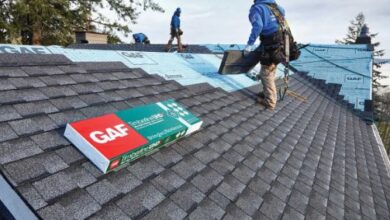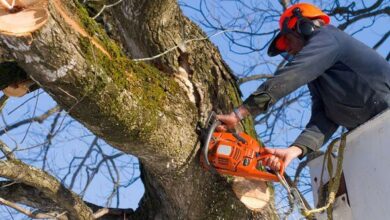Enhancing Accessibility in Full Home Renovation for Aging in Place
Creating an environment that supports aging in place through thoughtful home renovations is becoming increasingly important as our population ages. Many individuals prefer to remain in their homes as they grow older, but standard home layouts often present challenges for mobility and safety. We will explore practical strategies for enhancing accessibility in a complete home renovation to accommodate the needs of aging residents.
Adapting Entryways and Doorways
One of the first considerations in renovating a home for aging in place is ensuring ease of entry and movement throughout the house. Widening doorways to accommodate wheelchairs or walkers is crucial. Lever-style door handles are preferable to knobs, offering more effortless operation for those with limited hand strength or dexterity. Thresholds should be minimized or eliminated to prevent tripping hazards. Additionally, installing ramps where steps exist can provide seamless access for individuals with mobility aids, promoting independence and safety.
Accessible Bathroom Design
Bathrooms are spaces where accessibility improvements can significantly enhance daily living for aging residents. Installing grab bars near toilets and in showers or baths improves stability and support. Showers should be designed without curbs or low-profile thresholds to facilitate easy entry. Adjustable showerheads and handheld sprays offer flexibility for users of varying heights or abilities. Non-slip flooring is essential in wet areas to prevent falls. Adequate lighting, including night lights, ensures visibility and safety during nighttime bathroom visits, promoting confidence and independence.
Kitchen Modifications for Convenience
The kitchen is often the heart of the home and requires thoughtful modifications to support aging in place. Lowering countertops and sinks can accommodate individuals using wheelchairs or who prefer to sit while preparing meals. Lever-handled faucets and pull-out shelving in cabinets make items more accessible. Installing appliances at accessible heights reduces the need for bending or stretching, minimizing strain. Clear, contrasting markings on controls and appliances aid those with visual impairments. A well-organized kitchen enhances functionality and encourages continued enjoyment of cooking and meal preparation.
Creating a Safe and Navigable Living Space
Throughout the home, ensuring a safe and navigable environment is paramount. Open floor plans with wide pathways allow for easy maneuvering of mobility aids and reduce the risk of accidents. Flooring choices such as low-pile carpeting or slip-resistant materials enhance traction and ease of movement. Adequate lighting, including task lighting in work areas and motion-sensor lights in hallways, improves visibility and security. Strategically placed seating provides rest areas and promotes comfort while moving about the home. Focusing on these aspects can transform a house into a supportive environment that promotes independence and well-being.
Enhancing Comfort and Accessibility in Bedroom Design
The bedroom serves as a sanctuary for relaxation, making it essential to optimize its design for comfort and accessibility. Installing bed rails or adjustable beds assists individuals with mobility challenges in safely get in and out of bed. Ample space around the bed allows for maneuvering wheelchairs or walkers, promoting independence. Well-placed lighting controls near the bed provide convenience for nighttime reading or adjusting room illumination without the need to navigate in the dark. Additionally, ensuring ample storage at accessible heights reduces the need for strenuous reaching and bending, enhancing daily routines.
Technological Integration for Convenience
Integrating technology into home renovations can significantly enhance convenience and accessibility for aging residents. Smart home devices like voice-activated assistants and automated lighting systems offer hands-free control over various home functions. These technologies can adjust lighting, temperature, and security features with simple voice commands, minimizing physical exertion and promoting independence. Medical alert systems with fall detection capabilities provide peace of mind to residents and their loved ones, ensuring timely assistance in emergencies. Moreover, remote monitoring systems allow family members or caregivers to check on the well-being of elderly residents from afar, fostering a sense of security and connectedness.
Outdoor Accessibility and Safety Considerations
Ensuring outdoor spaces are accessible and safe is as crucial as interior renovations for aging in place. Installing ramps or gradual slopes at entry points allows easy access to and from the home. Non-slip surfaces on pathways and patio areas prevent slips and fall, particularly in wet or icy conditions. Adequate lighting along pathways and near entrances enhances visibility during evening hours, reducing the risk of accidents. Accessible gardening areas or raised beds enable continued enjoyment of outdoor hobbies, promoting physical activity and well-being. By incorporating these outdoor accessibility features, homeowners can fully utilize and enjoy their outdoor spaces throughout all stages of life.
Creating an environment that enhances accessibility in a complete home renovation from Unicus Construction, LLC for aging in place involves comprehensive planning and thoughtful design considerations. By addressing interior spaces such as entryways, bathrooms, kitchens, and bedrooms, integrating technology, and ensuring outdoor accessibility, individuals can maintain independence, safety, and comfort as they age. These enhancements facilitate daily activities and contribute to a higher quality of life by fostering autonomy and reducing physical barriers. Investing in accessible home renovations allows individuals to continue living in familiar surroundings while enjoying a fulfilling and dignified lifestyle.


